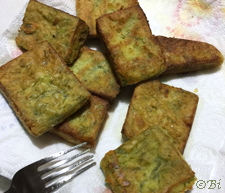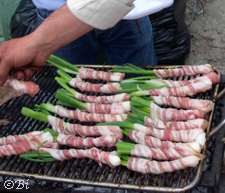| ||||||||||
You are in: Home The traditions Tipical dishes | ||||||||||
| ||||||||||
Clear peasant tradition: genuineness and natural ingredients
It is the expression of an ancient and original culture, certainly peasant culture, often dictated by the calendar (Saint Joseph, Saint Nicolas, Holy Friday, Thursday grass, ) or the seasons, fruit of a poor economy, based on the cultivation of cereals, on sheep farming and few other tree cultivations. The essential ingredients of sweets and cooking come directly from the local territory: almonds, pistąchio, pulses, asparagus, prickly pears, mushrooms, vegetables, olive oil, milk. The legumes (green or dried) represent the majority of first courses: broad beans, chickpeas, beans, peas and lentils are cooked and used in many ways (pasta with beans, lentils and chickpeas or with broccoli, porridge chickpeas' flour, ). Up to few years ago, on Saint Nicolas holiday, even wheat, boiled and dressed with olive oil, was a traditional dish in the kitchens of the farmers of Bronte. The peasant tradition has left also very many dishes based on wild vegetables as the minestra maritata (mixed vegetables picked in the fields and fried with garlic and chilly), fried cauricelli (wild, white mustard), or pasta with wild fennel. Other common dishes are grilled mushroom of ferra (many varieties of mushrooms grow in the woods of Bronte), baked onions and grilled peppers.
The second dishes, that the poor brontese peasant could not afford or maybe did not even know, are very poor and unrefined. Besides those traditional and characteristic, all have a base of meat (the kid, the rabbit, the sausage with wild fennel, stewed or with tomato sauce, the lamb with pistąchio) are also to be taken into consideration the castrated lamb chops grilled over embers and the sumptuous Caponata (made with eggplant, green olives, celery, zucchini, onion, tomato and capers). Finally, we do not want to forget the Stigghjori (long, thin rolls with the basic ingredient of bacon or, better yet, intestines, especially lamb intestines, seasoned and roasted on the grill twisted around a fresh onion), the Cadduni (still tender heads of basal leaves collected from the artichoke, deprived of thorns and lamina and cut into small pieces) breaded and fried and the delicious, fragrant pane di Bronte (Bronte bread) still cooked by some bakeries in traditional stone ovens. | ||||||||||
| ||||||||||
| ||||||||||||||||||
| ||||||||||||||||||
 The cooking in Bronte is traditionally poor, of clear peasant inspiration, made with ingredients simple and natural, but, because of this, results rich of ancient, genuine flavors and of dishes nowadays forgotten.
The cooking in Bronte is traditionally poor, of clear peasant inspiration, made with ingredients simple and natural, but, because of this, results rich of ancient, genuine flavors and of dishes nowadays forgotten.











 'A Finucchina
'A Finucchina Speaking of Bronte cuisine, the "sparacogni" (a kind of asparagus), a variety of wild herb similar to asparagus that grows spontaneously in the woods and in the sciare, deserve a special mention.
Speaking of Bronte cuisine, the "sparacogni" (a kind of asparagus), a variety of wild herb similar to asparagus that grows spontaneously in the woods and in the sciare, deserve a special mention.



 The "Tamus communis" (commonly Tamaro, for the people of Bronte 'a sparacogna). Its shoots are clearly preferred to those of the Spiny Asparagus or the Butcher's Broom.
The "Tamus communis" (commonly Tamaro, for the people of Bronte 'a sparacogna). Its shoots are clearly preferred to those of the Spiny Asparagus or the Butcher's Broom. 3) as a vegetable dish: cooked without water, with the addition of garlic, oil and chili pepper.
3) as a vegetable dish: cooked without water, with the addition of garlic, oil and chili pepper.